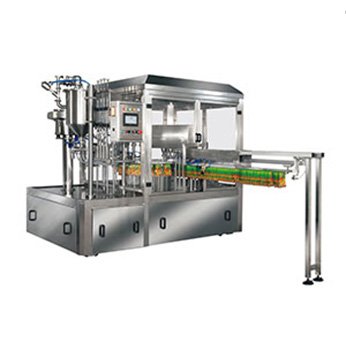I. Basic Concepts
Q1: What is a wrapping machine used for?
A: The main function of a wrapping machine (commonly known as a film wrapper) is to wrap palletized goods into a solid, integrated structure using plastic stretch film (stretch film). Its core purposes are:
Preventing loose pallets: Preventing goods from collapsing or scattering during transportation and storage.
Dust and moisture-proofing: Protecting goods from dust, moisture, and oil.
Theft prevention and privacy protection: Concealing cargo information and making it more difficult to steal.
Reinforcement: Improving overall stability and facilitating mechanized handling with forklifts.
Q2: What are the main types of wrapping machines? Which should I choose?
A: There are three main categories. Choose one based on your cargo and needs:
Turntable type: The most common. Palletized goods are placed on a rotating turntable, and the film frame moves up and down to wrap the goods. It is suitable for most regular, solid goods.
Arm type (rotating arm type): The film arm rotates around the stationary goods. Suitable for extremely high, heavy, unstable, or top-fragile goods (such as paper pulp, furniture, and large equipment).
Ring (Gantry) Wrapping: The goods are wrapped around a fixed ring frame. Suitable for integration into fully automated production lines, it offers extremely high efficiency.
Q3: What is “pre-stretching”? Is it important?
A: It is very important! The pre-stretching function uses a pair of rollers with different speeds to stretch the stretch film (usually 200%-400%) before it is released.
Advantages:
Significant savings in consumables: 1 meter of film can achieve a 2-4 meter wrapping effect, significantly reducing film costs.
Tighter wrapping: The stronger retraction force after stretching allows for tighter bundling.
Conclusion: If your budget allows, be sure to choose a machine with a pre-stretching frame; this feature offers the highest return on investment.
II. Selection and Use
Q4: What are the key parameters to consider when purchasing a wrapping machine?
A: Key considerations include:
Cargo size: Maximum pallet dimensions (length, width, and height) and weight.
Production efficiency: The number of pallets you need to wrap daily will determine your machine speed requirements.
Cargo type: Is the product fragile or unstable? This will determine whether you choose a turntable or arm-type machine.
Power supply and power consumption: Is a suitable power source (220V/380V) available on site?
Functional requirements: Do you need pre-stretching, photoelectric spacing, top and bottom reinforcement wrapping, or other features?
Q5: How should I set the number of wrapping layers to ensure the product does not fall apart?
A: This is a rule of thumb, but follow these guidelines:
General stability: Generally, a film layer that covers 50%-70% of the product height is sufficient (this can be achieved by adjusting the number of times the film rack is raised and lowered).
High stability: For heavy or irregular cargo, achieve a coverage rate of over 80%, and add additional wraps at the top and bottom (“top reinforcement” and “bottom reinforcement” features).
Best Practices: Test the product by manually pushing it after wrapping. A slight spring in the product, but no overall movement, is ideal. Overwrapping can lead to unnecessary costs.
Q6: Why does the stretch film frequently break?
A: Possible Causes and Solutions:
Pre-stretching is too high: Reduce the pre-stretching percentage; this is the most common cause.
Poor Film Quality: Replace with high-quality stretch film with improved toughness and uniform thickness.
Equipment Burrs: Inspect and polish the guide rods and rollers on the film path for burrs or damage.
Brakes Too Tight: Adjust the film roll tray’s damping (brakes) to ensure they are not too tight.
III. Troubleshooting and Maintenance
Q7: What should I do if the turntable/film arm does not rotate after starting the machine?
A: Troubleshoot as follows:
Check the emergency stop button: Is it pressed? This is the most commonly overlooked cause!
Check the limit switches: Check that all safety limit switches (such as the protective door switch) are reset or damaged.
Check the power supply: Is the voltage normal? Is the power cord properly connected?
Contact Customer Service: If all of the above is normal, the inverter or motor may be faulty and you should contact a qualified professional.
Q8: The film being wound is very loose and has no tension. What should I do?
A:Check pre-stretching: Is the pre-stretching function enabled? Is the ratio set too low?
Check film tension: Adjust the tension adjustment knob on the film holder to increase tension.
Check the brake: Is the film roll brake too loose? Tighten it appropriately.
Q9: What daily maintenance is required?
A: Simple routine maintenance can significantly extend the life of the equipment:
Daily: Clean the machine, especially the turntable and guide rails, to remove debris and dust.
Weekly/Monthly: Check and tighten all screws and connectors.
Semi-annually: Lubricate moving parts such as chains, guide rails, and bearings.
Anytime: Check that the surface of the photoelectric switch is clean and not obstructed.
IV. Consumables and Other Products
Q10: What kind of stretch film should I choose?
A: It depends on two main parameters:
Material: Polyethylene (PE) stretch film is preferred.
Thickness: Choose according to the weight of the cargo.
Lightweight cargo: Choose 0.015mm – 0.02mm (15-20 filaments).
Medium-heavy cargo: Choose 0.02mm – 0.025mm (20-25 filaments).
Heavy and sharp cargo: Choose 0.025mm or thicker (25 filaments or more) or “reinforced” film.
Recommendation: Don’t just focus on the lowest price. High-quality film has better stretchability and toughness, and the actual unit wrapping cost may be lower.
Q11: Can a wrapping machine wrap round or irregularly shaped cargo?
A: Yes, but it can be challenging.
An arm-type wrapping machine is a better choice because the cargo remains stationary and won’t roll or collapse due to rotation.
If using a turntable, the turntable’s start and stop speeds must be significantly reduced (controlled by a frequency converter) to prevent inertia-induced cargo shifting. Furthermore, the number of wrapping layers should be increased for reinforcement.
We hope this FAQ answers most of your questions about wrapping machines! If you have more specific questions, please contact us directly.





